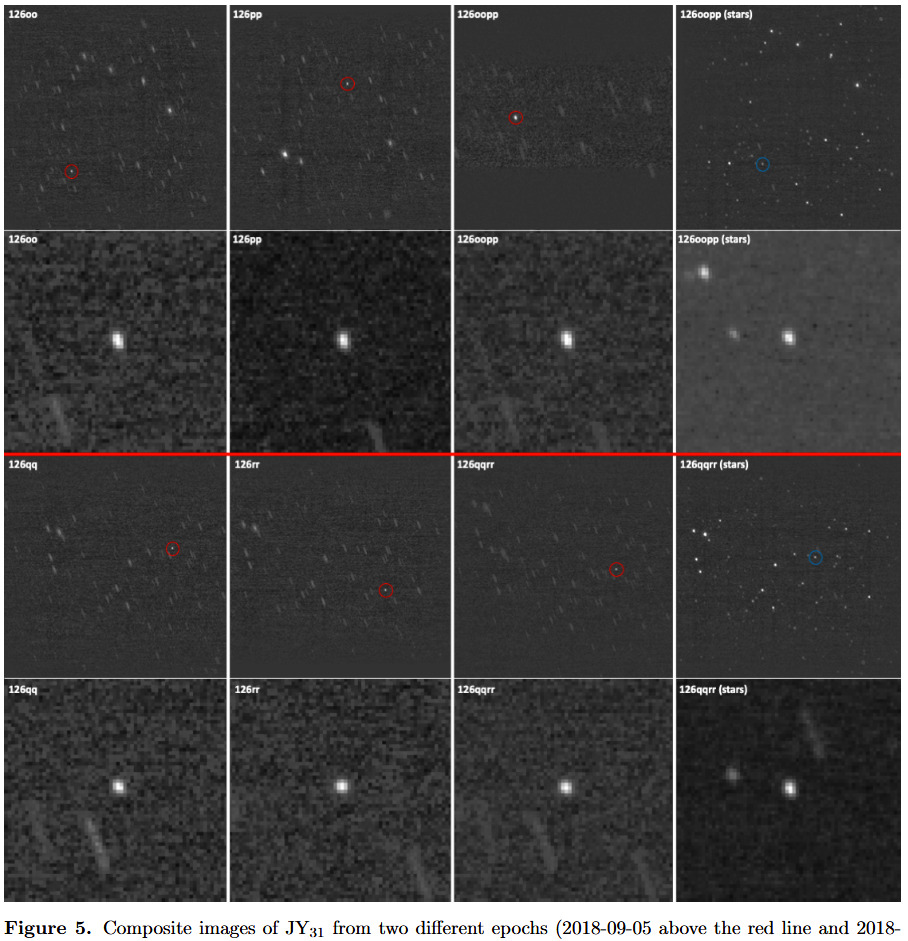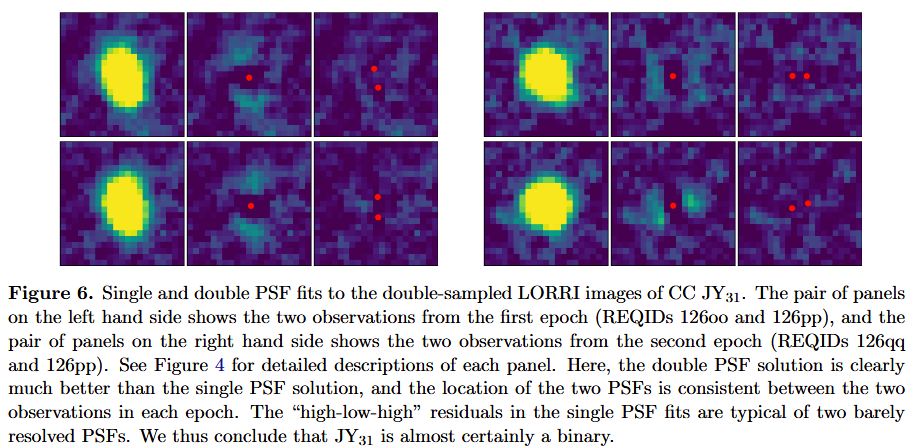dv said:
New Horizons has only had two close encounters (Pluto and Arrokoth) but it has passed within scoping distance of several other Kuiper Belt objects. This study below concerns various trans-Neptunian objects (four of them KBOs) that NH inspected from a distance of 0.3 AU or less.
0.3 AU may seem a long way (about 45 million km) but considering these critters are some 40 AU (6 billion km) from Earth, New Horizons has a much better vantage point than any Earth-adjacent telescope.
Around 80 KBOs have been determined to be binaries just based on Earth observation. New Horizons inspected four KBOs that are not clearly binaries based on Earth obs: of these, two are close binaries (with orbital distances between the two bodies being under 300 km, one appears not to be, and the fourth wasn’t adequately characterised.
This adds to the notion that binaries are very common in the Kuiper Belt.
https://arxiv.org/abs/2201.05940
> Using the New Horizons LORRI camera, we searched for satellites near five Kuiper belt objects (KBOs): four cold classicals (CCs: 2011 JY31, 2014 OS393, 2014 PN70, 2011 HZ102) and one scattered disk object (SD: 2011 HK103). These objects were observed at distances of 0.092-0.290 au from the New Horizons spacecraft, achieving spatial resolutions of 136-430 km (resolution is ∼2 camera pixels), much higher than possible from any other facilities.
So Pluto is a “cold classical” these days.
Most people would think that 2 camera pixels seems useless, but with KBO rotation and clever processing it can actually be quite useful.
> Here we report that CC 2011 JY31 is a binary system with roughly equal brightness components, CC 2014 OS393 is likely an equal brightness binary system, while the three other KBOs did not show any evidence of binarity.
Two out of five. They give an estimated 60 km diameter for CC 2011 JY31.


Well, I’ll believe them. But those images look more to me like a single non-spherical object than a binary.

